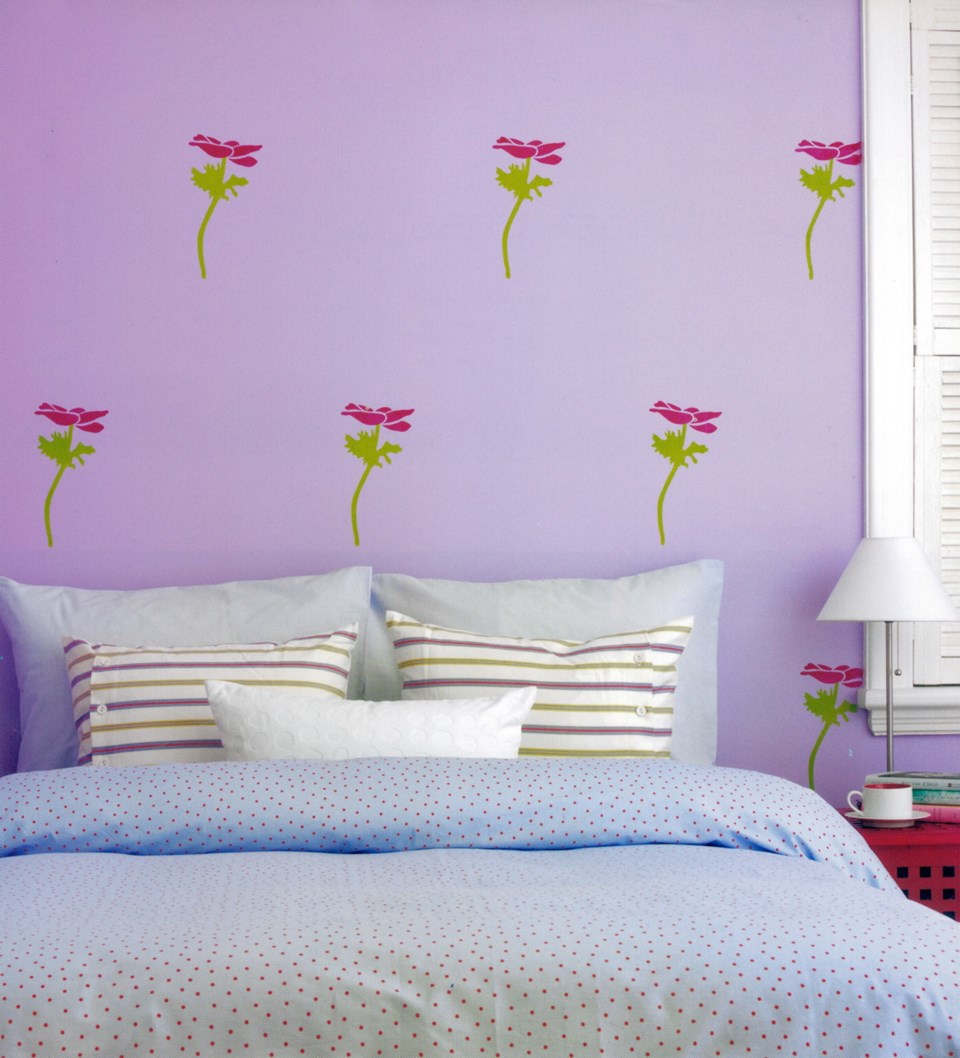Dear Debbie: I am redecorating our guest room on a budget. I’d like some design on the walls, but don’t want the expense of wallpaper. Is stenciling out of date? Are there more contemporary designs?
Shantel
Painting and stencilling will always be a great replacement for expensive wallpaper. You can emulate special effects such as marbling, inlays, and relief. Or build a mood with motifs that characterize your theme. A stencilled design can run across the wall, over window frames, even onto floors. There are so many options. I have always liked the feeling of dimension and painterly style that stencils offer.
One of my favourite examples is the bedroom vignette shown here. The background is a rich shade of lilac, a cheerful and peaceful colour in its own right. I wanted to build on this mood, and chose to stencil a series of flowers that appear to float across the room. I photocopied and enlarged a picture of a single poppy to make the stencil. I made a large grid of vertical and horizontal lines as a guide to stagger the poppies in a symmetrical pattern. (Use chalk as it is easy to wipe off.) One line of poppies is positioned at the point where the lines cross. On the next row, the poppies are at midpoints from the line above.
I doubt that stencilling will ever go out of date. However, styles change and popular new motifs are continually appearing. You will also note that large print designs are on trend now. You have many options. Check out modern stencil designs online: stencil-library.com and royaldesignstudio.com are excellent sources with lots of graphics and funky designs from which to choose.
Dear Debbie: It’s time to paint over my little girl’s stencilled borders. I created an eight-inch band two feet above her bedroom floor, and filled it with her favourite teddy-bear motifs. How do you suggest I cover the stencilling? It is kind of bumpy.
Loraine
This question is a good one to consider when you first decide to stencil a piece of furniture, a whole wall or border. It is not meant to dissuade you from such a fun and versatile decorating form. But it is good to know what steps to follow when you want a new look.
When you paint a stencil, even though you are only adding a light coat of paint, it will stand slightly above the base coat. Run your fingers over the stencilled portions and you will feel the difference.
A fresh coat of paint will hide the colour, but not the impression that the stencil has left on the surface. The edges will need to be sanded to smooth out the surface. There are small sanders on the market that will make this job easier.
Look for mouse sanders or craftsman sanders; they are small and easy to use, very good for detail work. Feather the edges of the stencil lines and flatten out any bumps. Clean away the dust.
Apply one or two coats of high-quality high hide primer. You will be able to see if the motif is still visible. If so, sand some more. Once you have a smooth, primed surface, apply your new paint colour.
Debbie Travis’s House to Home column is produced by Debbie Travis and Barbara Dingle. Email questions to [email protected]. Follow Debbie on Twitter at twitter.com/debbie_travis, and visit her website, debbietravis.com.
